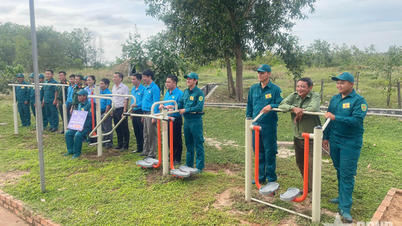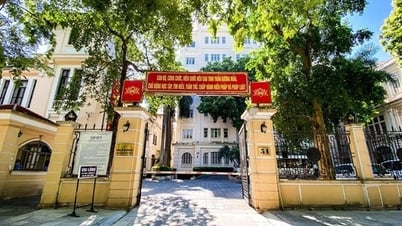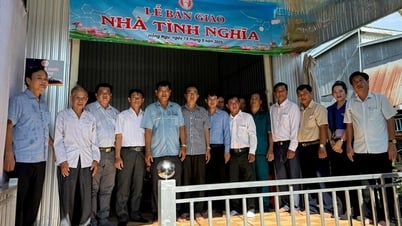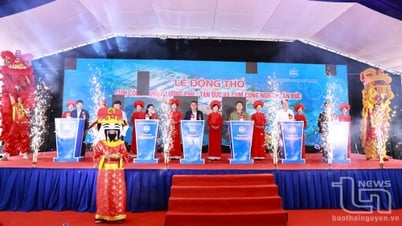Thousands of birds and storks choose the mangrove forests and salt marshes in Con Chim as their habitat, creating a peaceful scene that attracts many tourists.


Mr. Truong Xuan Dua, Head of the Agricultural Technology Application Research Station, Binh Dinh Agricultural Extension Center, said that there are dozens of bird species on the island, with white storks accounting for the largest number.
As the person in charge of caring for and protecting the mangrove forest in Con Chim, Mr. Dua said that the flock of white storks also flew to nearby ponds or fields to find food, but then they still returned to the island because they considered it their home. There was a time when there were about 10,000 on the island.


White storks land on the lagoon in search of food. Besides white storks, there are also many species of birds on the island such as gongs, cuckoos, lapwings, and sparrows.

This area has about 100 families with 1,000 people, working as fishermen and raising seafood. Mr. Duong Thanh Trung, 46 years old, said that the island hamlet has existed for hundreds of years, his family has lived here for many generations. In addition to the main house in the hamlet, people also build small huts next to ponds to raise shrimp, crabs and fish.
Families are assigned to protect the forest and preserve the ecosystem for shrimp and fish to thrive. "Because of the rich source of aquatic products and food, there are many birds and storks coming to Con Chim," said Mr. Trung.

Mr. Trung catches goby fish in an intercropping pond. Mr. Trung’s pond is 1.4 hectares wide and generates an income of more than 10 million VND per month. In addition to the farming area, he also releases fish, shrimp, and crab seeds into the common pond to regenerate aquatic resources.

Recently, Con Chim has emerged as an attractive ecological spot in Binh Dinh. Seizing the opportunity, Mr. Van Minh, 37 years old, and his group of friends built rafts to welcome tourists with services such as dining, SUP, bird watching, crab and fish catching.

Because the birds fly fast, it is difficult for visitors to see them from close range and they cannot take selfies with the flock. Instead, when coming to Con Chim, visitors can experience other activities such as catching crabs and fish in the pond.


Vnexpress.net



![[Photo] Nearly 3,000 students moved by stories about soldiers](https://vphoto.vietnam.vn/thumb/1200x675/vietnam/resource/IMAGE/2025/5/17/21da57c8241e42438b423eaa37215e0e)


![[Photo] Readers line up to visit the photo exhibition and receive a special publication commemorating the 135th birthday of President Ho Chi Minh at Nhan Dan Newspaper](https://vphoto.vietnam.vn/thumb/1200x675/vietnam/resource/IMAGE/2025/5/17/85b3197fc6bd43e6a9ee4db15101005b)





![[Video] Mekong Delta attracts tourists with many unique destinations](https://vphoto.vietnam.vn/thumb/402x226/vietnam/resource/IMAGE/2025/5/17/59630b2596bf44419c0f9ef12b8a47a5)






















































































Comment (0)